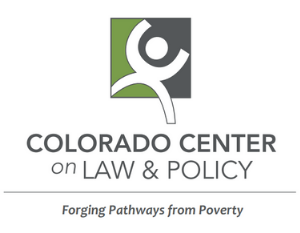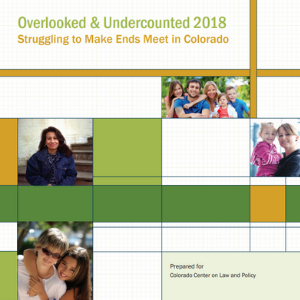Overlooked & Undercounted 2018
The Hidden Poor: Struggling to Make Ends Meet in Colorado
 Understanding the TRUE costs of living in Colorado for diverse family formation is critical to our work. With the support of The Women's Foundation of Colorado, WAGES grantee Colorado Center on Law and Policy (CCLP) released the sixth edition of the Self-Sufficiency Standard and accompanying reports Overlook and Undercounted and Exploring Economic Security Pathways in Colorado, funded by The M&I Charitable Giving Fund, a donor-advised fund held at WFCO.
Understanding the TRUE costs of living in Colorado for diverse family formation is critical to our work. With the support of The Women's Foundation of Colorado, WAGES grantee Colorado Center on Law and Policy (CCLP) released the sixth edition of the Self-Sufficiency Standard and accompanying reports Overlook and Undercounted and Exploring Economic Security Pathways in Colorado, funded by The M&I Charitable Giving Fund, a donor-advised fund held at WFCO.
The Hidden Poor
As the only statewide community foundation focused on women and their families, we have significantly funded the Self-Sufficiency Standard since the first report in 2001. We rely on the Standard to tell us what it costs to make ends meet in every county in Colorado while Overlooked and Undercounted tells us who is struggling, where they live, and the composition of their households. A disproportionate number of Coloradans experiencing economic distress are single moms and people of color. Many of them live above the poverty line but below the Standard, which means they make too much to qualify for most work supports and are among the “hidden poor.”
From Self-Sufficiency to Security
In addition, it’s critical to our grantmaking and public policy work that we understand the best pathways to move women from economic self-sufficiency to security. That’s why The M&I Charitable Fund, a donor-advised fund held at The Women’s Foundation, funded Exploring Economic Security Pathways in Colorado, a new report for our state in 2018, that builds upon the Standard.
What You Need to Know
Here are the key facts we think you should know, whether as a community member, policymaker, media member, or researcher.
 Overlooked & Undercounted
Overlooked & Undercounted
Read and download Overlooked & Undercounted 2018
- More than one in four Colorado households (430,000 or 27%) lack enough income to cover just the necessities.
- A significant portion of those living below the Standard work hard as part of the mainstream workforce, but their substantial work effort fails to yield sufficient income.
- A key structural problem is that women and people of color experience significantly less return on education and work effort than white men.
- Nearly 9 out of 10 single mothers of color with a young child have income that is inadequate to cover basic needs!